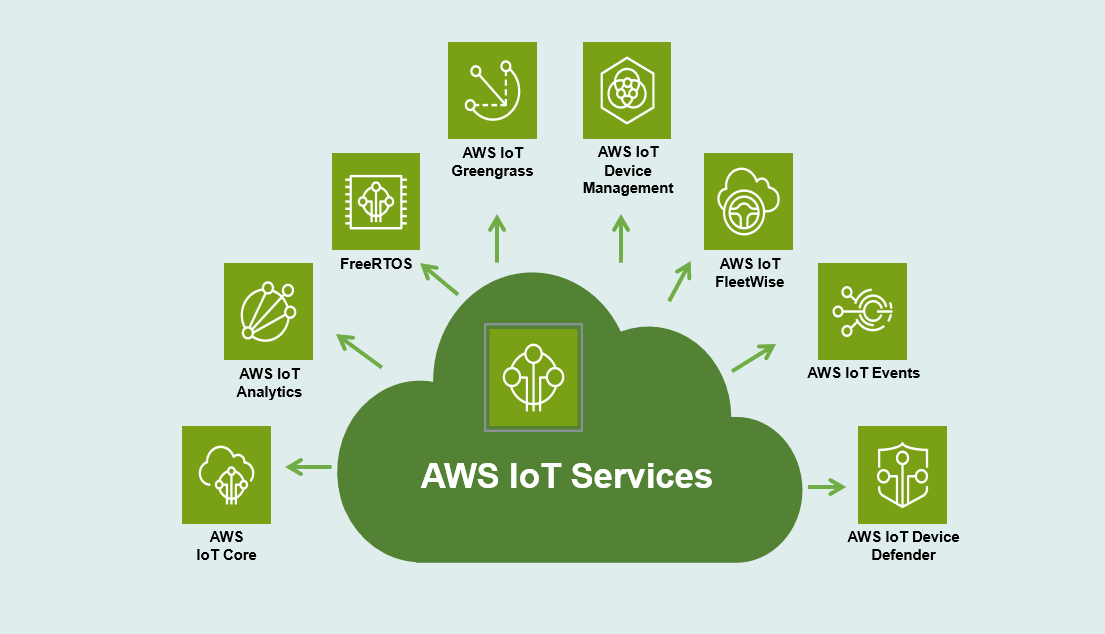The public sector's utilization of Internet of Things (IoT) devices is rapidly expanding as organizations recognize the value of implementing IoT solutions. Public sector agencies deploy IoT devices across diverse domains such as transportation, infrastructure, crime prevention, education, utilities, and environmental monitoring. For instance, IoT devices with control systems ensure the reliable delivery of power and water to citizens or detect gas leaks in pipelines.
IoT devices facilitate data exchange and trigger actions across machines, applications, and networks. Given their interconnected nature, securing this data and ensuring appropriate access for users, devices, and systems is crucial to safeguarding citizens from cyber threats like Distributed Denial of Service (DDoS) attacks. IoT devices, often numerous and geographically dispersed, with limited computational power, memory, and storage, can be easy targets for cyberattacks.
In this post, we will explore how to enhance the security of your IoT devices using Amazon Web Services (AWS) IoT services, referencing guidelines from the Cybersecurity and Infrastructure Security Agency (CISA)

How AWS IoT Supports Your IoT Devices
AWS IoT is a managed service that facilitates the connection of IoT devices to AWS cloud services and other devices using protocols such as Message Queuing Telemetry Transport (MQTT), MQTT over WebSocket Secure (MQTT over WSS), HTTPS, and Long Range Wide Area Network (LoRaWAN).
AWS IoT enables customers to onboard IoT devices at scale and manage them throughout their lifecycle. It supports client and server authentication to safeguard data integrity, enforce access control, and encrypt data.
Additionally, AWS IoT offers edge computing capabilities, allowing for local data processing and real-time decision-making, reducing latency. Seamless integration with other AWS services ensures AWS IoT can effectively support data processing and analytics in your applications.
Enhancing Device Security Using AWS IoT
To bolster the security of IoT devices, it is vital to address various areas susceptible to threats and vulnerabilities. We categorize these areas into device connectivity, data protection, device management, and device monitoring.
Let’s delve into each:
Device Connectivity
Due to their interconnected nature, a security lapse in one IoT device can compromise the entire network. Ensuring secure connectivity and authentication between devices and their destination services is critical. AWS IoT supports X.509 certificates and custom authentication methods, enabling secure device communication over a Transport Layer Security (TLS) connection. Once device identity is verified, AWS IoT Core policies and AWS IAM policies enforce stringent access control.
Data Protection
Encrypting all data, including configuration and transient data, is paramount. AWS IoT ensures that all communication between IoT devices and AWS IoT is encrypted using TLS, protecting data in transit. Additionally, defining data classification strategies based on sensitivity and implementing data lifecycle and archival policies helps manage and secure IoT data effectively.
Device Management
As the number of IoT devices grows, managing operations such as device provisioning, software updates, and security policy implementation becomes challenging. AWS IoT Device Management simplifies these tasks, offering capabilities to onboard, organize, and remotely manage devices. It allows bulk provisioning, security certificate uploads, and policy implementation. Organizing devices into groups facilitates indexing and searching, essential for troubleshooting and isolation. AWS IoT Device Management supports system performance monitoring, over-the-air updates, device rebooting, and factory resets.
This service also enables building web applications to monitor device status, including connection status, firmware version, and battery level. Alarms can be configured to notify changes in device status, triggering corrective actions when necessary.
Device Monitoring
Proactively detecting and resolving security issues is critical to minimizing downtime and preventing service disruptions. AWS IoT Device Defender continuously monitors IoT device fleets to identify security vulnerabilities, audit configurations, and detect unusual activity patterns using machine learning models. It can create alarms and trigger remedial actions, ensuring real-time detection and mitigation of security incidents.
Conclusion
In today’s interconnected world, securing IoT devices is crucial for maintaining data privacy and integrity. AWS IoT and related AWS services offer robust solutions to protect IoT deployments from potential threats. By leveraging encryption, access control, continuous monitoring, and other best practices, organizations can develop secure and resilient IoT solutions. As the IoT landscape evolves, embedding security from the design phase is essential for building reliable IoT systems. With AWS as a trusted partner, organizations can confidently navigate the dynamic IoT landscape and build innovative solutions.
We help build secure IoT solutions on AWS.